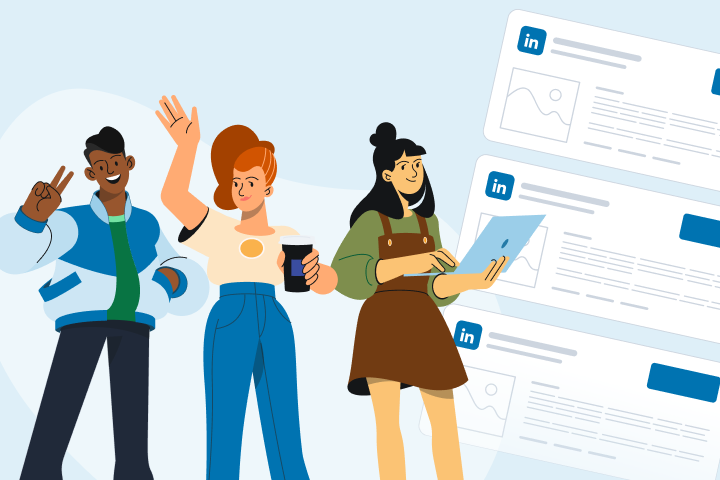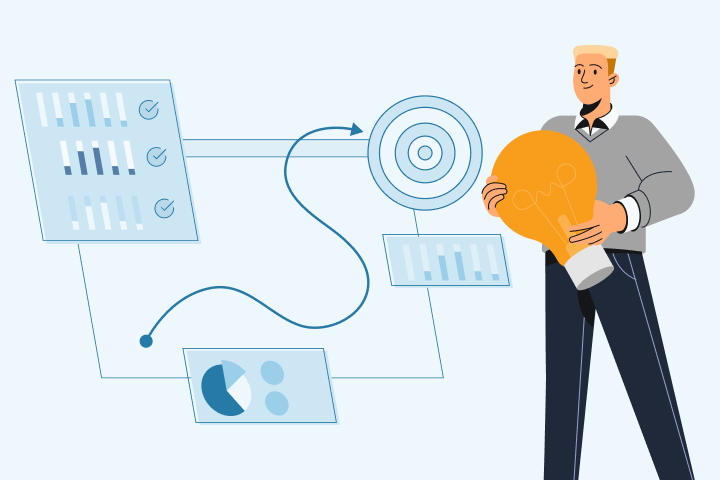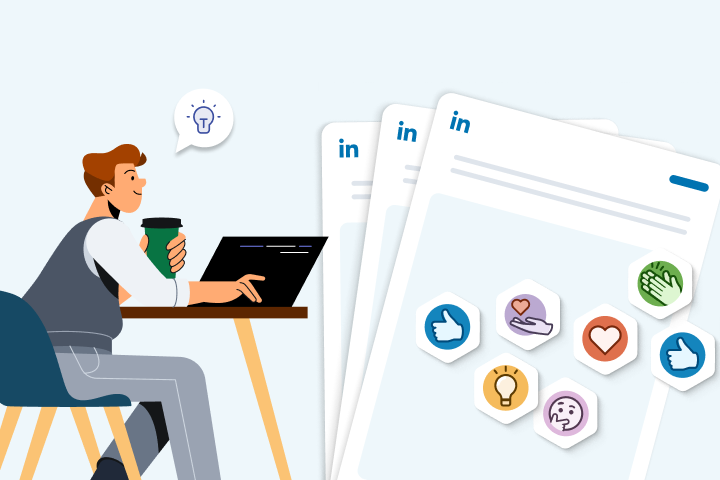Employee Advocacy: The Complete Guide to Building and Scaling Trust
When employees share, your brand speaks louder.
Imagine your brand message as a single stone tossed into a vast digital pond. Corporate channels create ripples, but when employees join in—each tossing their own pebble—the impact multiplies into powerful waves. This is the essence of employee advocacy: leveraging trusted personal networks to amplify your brand far beyond traditional reach. Let’s explore how to harness this force effectively.
What Is Employee Advocacy?
Employee advocacy is when employees promote their company through personal social media channels. It can also position them as brand ambassadors, organically extending corporate reach through trusted personal networks. It differs from staff advocacy, which focuses on internal morale, and brand advocacy, which includes external champions like customers. In the digital-first B2B landscape, where algorithms limit corporate reach, employee advocacy offers an authentic, trusted pathway to visibility.
With social networks prioritizing human connections, brands need their people to amplify messages. Advocacy turns employees into credible messengers, extending reach and driving engagement where traditional channels fall short. According to the 2025 Edelman Trust Barometer, employees are now seen as the most trusted institutional voice—more than media, NGOs, or even government—making them uniquely positioned to amplify brand credibility.
This isn’t a complex process — in fact, it’s often as simple as marketing providing shareable content while platforms like GaggleAMP streamline how employees engage with it. By making participation effortless, companies can tap into networks far larger and more trusted than their corporate channels.
Why Employee Advocacy Matters
The most compelling employee advocacy benefits go beyond engagement—they include faster trust-building with buyers, increased talent attraction, and stronger internal alignment across departments. For companies, employee advocacy boosts visibility, engagement, and ROI. For employees, it enhances personal brands, builds professional networks, and positions them as thought leaders. Internally, advocacy fosters cross-functional collaboration and strengthens company culture.
B2B buyers conduct extensive research before contacting vendors. Advocacy accelerates trust, making your brand more discoverable and credible. The Gallup Workplace Report (2023) shows active programs lead to 23% higher profits and 25% more engaged employees.
By aligning Marketing, Sales, HR, and Leadership, advocacy initiatives amplify external perception while driving internal cohesion.
How Employee Advocacy Works
Employee advocacy extends brand messaging through personal networks, bypassing algorithmic limitations of corporate pages. Peer-shared content resonates more, garnering higher engagement. Recent employee advocacy statistics show that content shared by employees receives 8x more engagement than content shared by brand channels, highlighting the trust and reach advantage personal networks bring.
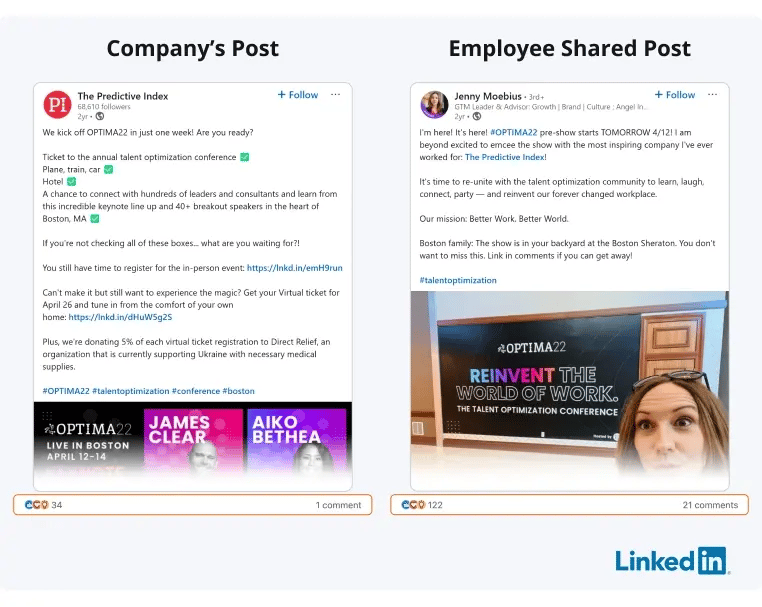
Platforms like GaggleAMP streamline content distribution, track participation, and incentivize employees through gamification. This “multiplier effect” can dramatically increase content reach.
For example, GaggleAMP users generate an average of 777 activities annually, reaching 23.2 million people, with a $61,718 earned media value per Gaggle.
Common Challenges in Employee Advocacy & How to Overcome Them
Even the best employee advocacy programs can stall if you don’t address the real reasons employees hesitate to participate. Below, we break down the common obstacles of employee advocacy programs and how to overcome each one with proven strategies and platform-based solutions.
Low Participation: Solving for Silent Employees
The most common challenge in advocacy programs isn’t tech—it’s inertia. Employees either don’t see the value, aren’t sure what to post, or don’t want to spend time figuring it out.
For most marketers, this becomes a daily frustration. You’ve curated content, shared Slack nudges, even made company-wide requests—yet visibility stalls and only 5–10% of employees engage. The perception? Advocacy is “extra work.”
Solve this by making participation rewarding and effortless:
-
Gamify the experience with leaderboards and incentives that spark friendly competition.
-
Deliver activities directly into workflows reducing the need to “log into” anything new.
-
Use pre-written messaging or AI-assisted copy so employees don’t overthink what to say.
According to GaggleAMP usage data, programs that include gamification and Slack-based delivery see 60%+ average participation—a stark contrast to passive opt-in programs.
Executive and Sales Reluctance: Addressing the Role Model Gap
When leadership or sales teams don’t engage, the entire program loses momentum. Without visible buy-in from top stakeholders, employees feel little urgency or permission to participate.
Marketing and Sales Managers often reports this as the most disheartening issue: “We’ve asked Sales to share posts, but they don’t think it’s worth their time.” Execs may worry about tone. Sales may claim they “don’t know what to say.” Either way, the message is clear: advocacy is “just Marketing’s thing.”
Reframe executive and sales engagement as brand enablement, not extra labor:
-
Assign lightweight actions they can complete in one click, with pre-approved messaging tailored to their voice.
-
Share weekly visibility reports with individual impact metrics (e.g., clicks, reach, engagements).
-
Model advocacy from the top—when execs participate, others follow.
Positioning advocacy as part of personal brand-building—not corporate cheerleading—shifts the mindset and helps improve internal alignment and credibility.
Workflow Disruption: Eliminating Friction From the Process
When advocacy tools feel like one more dashboard, employees don’t adopt them. Time-constrained teams won’t toggle between inboxes, Slack, LinkedIn, and an advocacy platform just to complete a task.
This leads to abandonment. You may onboard 50 employees, but a month later only five are still sharing. The tools become shelfware. Use platforms that integrate into the channels employees already use.
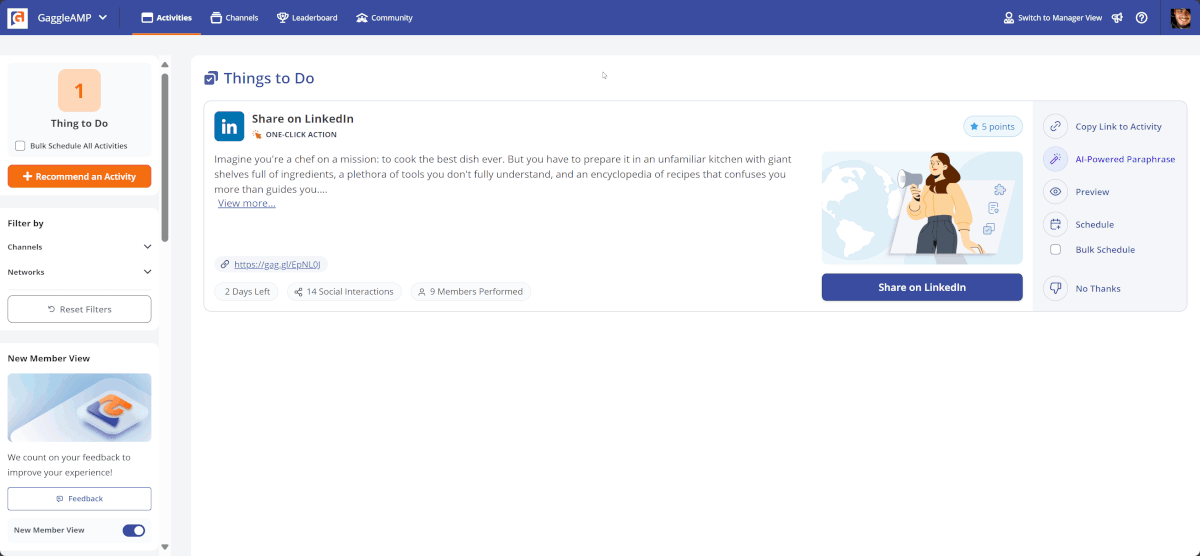
For example, GaggleAMP integrates seamlessly with workplace ecosystems allowing employees to:
-
See activities in their native feed
-
Click to complete a task (like sharing a post)
-
Opt out or personalize messages in seconds
When advocacy feels native, it becomes habit. That’s how programs evolve from launch events to sustained business levers.
By diagnosing and addressing these specific challenges, marketers can shift advocacy from a side project into a strategic engine for brand reach and internal alignment. Programs that succeed aren’t just well-promoted—they’re frictionless, visible, and owned across the organization.
Building an Employee Advocacy Program That Scales from Day One
Starting an employee advocacy program is like assembling a winning team—you need clear goals, the right players, and a solid game plan. Without structure, even the most enthusiastic employees may falter.
The right strategy doesn’t start with the platform—it starts with people, trust, and alignment across your organization. Below is a step-by-step approach for building a scalable program that actually drives engagement, not just enrollment.
Set Outcomes Before Tactics
Too many programs fail because they launch without defining success. Before inviting a single employee, decide what impact you want advocacy to have. Are you aiming for more LinkedIn reach, pipeline contribution, organic traffic, or cultural visibility?
Clear outcomes help frame everything that follows—from platform configuration to how you report success to leadership. Define metrics like:
-
Average engagement per employee
-
Earned media value
-
Website traffic from employee shares
-
Increases in LinkedIn SSI or reach
These indicators give the program weight beyond “brand buzz.” They let you benchmark progress and tell a credible story up the chain.
Identify Your First Advocates Thoughtfully
Don’t open it up to everyone at once. Start small, intentional, and strategic.
The ideal pilot group includes:
-
Employees already active on LinkedIn or X
-
Influential team leads with credibility inside the org
-
Individuals who represent different departments (Sales, CS, HR)
Starting with 10–30 people allows you to shape tone, workflow, and expectations without the noise of mass onboarding. Their early wins become internal proof points that fuel broader adoption.
Align Content With Internal and External Relevance
Employees won’t share content that feels overly polished, self-congratulatory, or irrelevant to their network. Instead, curate content types that map to both company goals and employee interests:
-
News about hiring, milestones, or customer success
-
Commentary on industry trends
-
Culture stories, events, or behind-the-scenes moments
-
Educational blog posts that position your brand as a thought leader
Make sure content reflects the tone employees want to be associated with. Ideally, give them room to personalize it—this increases authenticity and engagement.
Deliver Through the Tools They Already Use
The fastest way to lose interest is to require yet another login. Employees live in Slack, Teams, and email—not inside standalone advocacy dashboards.
Use a platform like GaggleAMP that integrates directly into their daily workflow. Tasks arrive where they already spend time, can be completed in one click, and disappear just as easily. That minimal lift is how a 16-minute weekly commitment translates into consistent, scaled participation.

Design Incentives That Fit Your Culture
Incentives aren’t bribes—they’re motivators tailored to your environment. The best programs use:
-
Leaderboards for visibility and friendly competition
-
Quarterly spotlights or shout-outs from leadership
-
Swag, gift cards, or extra perks for power users

But not all rewards are tangible. Recognition and visibility often matter more. Some companies see engagement double after simply acknowledging top performers in all-hands, internal channels and, specially, on social media.
Pilot, Measure, Refine, Scale
Launch is just the beginning. Once the pilot is live, track outcomes, gather feedback, and optimize based on what’s working.
Ask:
-
Which types of content are most shared?
-
Who’s emerging as an internal influencer?
-
Where is friction still slowing participation?
With that feedback, expand in waves. Recruit new employees by function or department, share success stats, and allow internal advocates to pull others in. Scaling becomes natural when early participants feel empowered—not managed.
A successful advocacy program isn’t a one-time campaign—it’s a rhythm. When designed with trust, clarity, and workflow in mind, advocacy becomes not just sustainable, but scalable. And it delivers returns that go far beyond the Marketing department.
Why LinkedIn Is the Power Channel for Employee Advocacy
For B2B brands, LinkedIn isn’t just a social platform—it’s the credibility engine. This is where thought leadership is forged, buyer trust is earned, and deals are often influenced before conversations even begin. That’s why employee advocacy efforts belong here first.
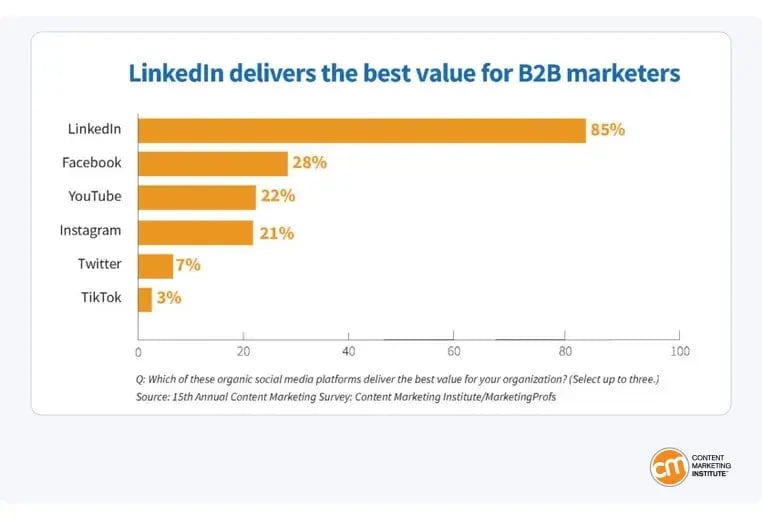
When employees share branded content on LinkedIn, it’s seen as professional context, not promotion. That difference matters. LinkedIn’s algorithm favors personal engagement over brand pages, meaning content shared by your employees will often outperform the same post shared by the company account.
This is especially true when the content is positioned not as a broadcast, but as a perspective.
Best Practices for Maximizing LinkedIn Advocacy Impact
To see sustained visibility, make it easy for employees to share content that feels both relevant and authentic to their networks. Here’s how:
-
Provide ready-to-share content in a way that’s easy to post in one click, yet adaptable for tone or format.
-
Encourage light personalization—even a short opinion or sentence before a link dramatically improves engagement and authenticity.
-
Highlight top-performing employee posts in internal channels to show what “good” looks like and spark momentum.
Over time, these actions help employees build their own LinkedIn presence while driving meaningful reach for the brand. The result? A dual benefit: your team grows their professional footprint, and your company increases visibility where decision-makers pay attention.
Focus Your Advocacy Strategy Where It Matters Most
While employee advocacy can technically occur on multiple platforms, 70%+ of GaggleAMP activities happen on LinkedIn. It’s where B2B buyers gather, where sales teams connect, and where leadership content gains traction. Trying to spread efforts across every social channel dilutes impact.
Focusing your strategy on LinkedIn doesn’t limit reach—it ensures that reach is credible, contextual, and measurable.
Proven Strategies to Maximize Employee Advocacy Impact
Once your advocacy program is live, success isn’t just about participation—it’s about sustained alignment. Your employees aren’t just amplifiers. They’re internal influencers. And when equipped correctly, they drive content further, faster, and with greater trust than any brand account ever could.
The most effective programs follow a few key employee advocacy best practices: delivering content in native workflows, using gamification to sustain momentum, and spotlighting top contributors to reinforce engagement.
Below are three core strategies to help advocacy evolve from sporadic sharing to a repeatable engine for brand and demand impact.
Align Content Strategy With Employee Motivation
The content you feed into your advocacy program must be more than just brand updates. It should serve a dual purpose: supporting your company's narrative and enabling employees to enhance their own credibility.
Effective programs blend:
-
Timely company news with thought leadership angles
-
Industry commentary with a human perspective
-
Content tiers that offer both direct shares and optional insights to add
Use an internal content strategy guide tailored to advocacy. This ensures every post connects to a broader message while giving employees enough flexibility to remain authentic.
Use Gamification to Sustain Engagement
Employee advocacy isn’t mandatory—but it should feel irresistible. Participation often wanes when it’s treated as a chore. Gamification changes the narrative by making sharing rewarding, visible, and even fun.
Programs using platforms like GaggleAMP can:
-
Assign point values for completing specific activities
-
Feature live leaderboards to drive friendly competition
-
Offer incentives like shout-outs, gift cards, or branded swag
The point isn’t the prize—it’s the habit. When advocacy becomes part of a routine, supported by recognition, engagement grows organically.
Apply Influencer Marketing Principles Internally
The same tactics that drive external influencer programs work inside your organization, too. Identify high-engagement employees and empower them as micro-influencers who lead by example.
To activate internal advocates:
-
Create tiers or ambassador programs for those who consistently engage
-
Encourage them to share more personal insights or success stories
-
Use them as champions during internal onboarding or training sessions
This approach reinforces advocacy as a prestige behavior, not a top-down directive.
By aligning content, engagement mechanics, and internal influence, you turn passive participation into a performance asset. These aren’t just tactics—they’re how employee advocacy scales with credibility and consistency.
Measuring and Proving ROI of Employee Advocacy
Advocacy may begin with trust and visibility, but to sustain it—and scale it—you need data. Not just likes or shares, but metrics that speak the language of business outcomes: engagement, reach, pipeline contribution, and earned media value.
| Metric | What It Measures | How It Ties to ROI |
|---|---|---|
| Engagement | Likes, shares, comments per post | Shows employee resonance and early attention signals |
| Reach | Total impressions and network amplification | Expands visibility at no additional paid cost |
| Click-Through Rate | Engagement-to-action conversion | Indicates audience interest and message effectiveness |
| Website Traffic | Sessions and behavior from employee shares | Connects social amplification to business site engagement |
| Earned Media Value | Value of unpaid reach and engagement | Quantifies savings compared to paid channels |
| Pipeline Influence | Opportunities tied to employee-sourced clicks | Validates sales enablement and marketing impact |
Advocacy isn’t a vanity project. When measured correctly, it becomes one of the most efficient ways to convert internal trust into external traction. And when ROI speaks the right language, the budget follows.
Common Mistakes in Employee Advocacy Programs
Even well-intentioned advocacy programs can fall flat if they rely on assumptions instead of systems. What separates high-performing programs from forgettable ones isn’t enthusiasm—it’s structure, clarity, and the ability to drive value across departments. To build that structure, you need to understand where most programs go wrong—not in intent, but in execution. These common advocacy mistakes often stem from misaligned incentives, unclear workflows, or assuming employee engagement happens naturally.
| Mistake | What Happens | How to Fix It |
|---|---|---|
| Tracking Vanity Metrics | Focus stays on likes instead of leads or revenue | Shift to KPIs tied to pipeline, website traffic, and ROI |
| Unclear Messaging | Employees hesitate or misrepresent brand | Provide clear, audience-relevant copy with optional personalization |
| Clunky Tools | Drop-off after initial enthusiasm | Use advocacy platforms that deliver tasks in native workflows |
| No Executive Participation | Program seen as low-priority or “just marketing” | Involve leaders as visible participants and share their impact |
| Overloading with Content | Employees ignore or tune out asks | Curate 2–3 high-value actions per week, not a firehose |
The best programs aren’t perfect—they’re just intentional. By avoiding these mistakes, you turn advocacy from a feel-good experiment into a performance asset that earns its place in the marketing mix.
Choosing the Best Employee Advocacy Tool for Adoption and ROI
The right advocacy platform isn’t just a tool—it’s the difference between participation and apathy. Between brand amplification and another “initiative” that goes nowhere. For B2B marketers, platform choice is a strategic decision: it affects adoption, visibility, and your ability to prove value across the organization.
| Feature | Must-Have Capabilities | Why It Matters | What GaggleAMP Offers |
|---|---|---|---|
| Ease of Use | Minimal clicks, intuitive UI, no training needed | Drives adoption and reduces onboarding time | One-click task completion, native workflow delivery |
| Workflow Integration | Slack, Teams, LinkedIn, calendar tools | Embeds advocacy into existing employee habits | Seamless integrations with Slack, Teams, and more |
| Gamification | Points, leaderboards, reward flexibility | Keeps motivation high and participation consistent | Customizable leaderboards and point systems |
| Analytics & Reporting | Track reach, engagement, earned media value, conversions | Proves ROI and supports budget justification | Full dashboard with per-campaign and per-user analytics |
| Scalability | User roles, group segmentation, content stream filtering | Enables growth without manual coordination | Role-based task assignment and multi-group segmentation |
Selecting the right platform isn’t just about checking off features—it’s about aligning usability, integration depth, and reporting clarity with your team’s actual behavior. The best employee advocacy tools make it easy to complete tasks within existing workflows, incentivize engagement through gamification, and offer precise metrics that tie activity to business impact.
Employee Advocacy in Action: Real Results from Real Teams
Success stories make advocacy tangible. While strategy and frameworks matter, nothing resonates more than seeing real companies drive measurable impact through structured, sustained employee engagement.
Below are three examples of how B2B organizations across different industries turned advocacy into business outcomes—not just buzz.
Learnerbly:
By activating just 25 employees through GaggleAMP, Learnerbly achieved a 275% increase in LinkedIn engagement. Over a single quarter, they generated 500+ clicks and 1,000 social interactions, amplifying their reach to 5.8 million users. This spike in visibility also translated to a 54% increase in organic website traffic, demonstrating how targeted employee advocacy can directly support brand awareness and lead generation.
WGroup:
The company strategically utilized GaggleAMP to enhance their consultants’ LinkedIn presence. Over three and a half years, their advocacy program generated 7,300 clicks and 7.8 million impressions. More importantly, this effort contributed to over $2 million in new sales opportunities, showcasing the direct pipeline impact of consistent, employee-driven content amplification.
Buurst:
Facing rising paid media costs, Buurst turned to GaggleAMP to empower their team as advocates. With fewer than 20 employees participating, they saved $20,000 in CPC spend within just four months. Their program generated over 700 clicks and expanded Buurst’s reach to 2.5 million people, effectively blending cost-efficiency with authentic engagement.
These examples demonstrate how structured, well-executed employee advocacy programs not only amplify brand reach but also deliver measurable business results — from engagement and cost savings to pipeline growth.
Building a Long-Term Employee Advocacy Strategy
Short-term enthusiasm can launch an advocacy program—but without a system for long-term engagement, most initiatives lose steam by month three. Sustaining advocacy requires more than content—it requires rhythm, relevance, and reinforcement across your organization.
Here’s how to move from episodic participation to a scalable, always-on program that supports growth.
Align Advocacy With Business and Brand Objectives
Programs fade when they operate in isolation. Instead, connect advocacy activities to larger goals—marketing campaign priorities, employer brand initiatives, sales enablement efforts, or product launches.
This alignment ensures:
-
Employees see the bigger purpose behind each post
-
Content stays fresh and varied across departments
-
Leadership stays invested because advocacy supports broader KPIs
Build Rituals Around Recognition and Feedback
Even the most streamlined program needs human connection. To keep employees engaged, embed recognition into your workflow:
-
Highlight top contributors in all-hands meetings or newsletters
-
Offer quarterly spotlights with executive praise or small rewards
-
Share feedback from Sales or Leadership on advocacy-driven wins
Use Tools That Evolve With Your Program
As advocacy scales, complexity grows. More teams, more content, and more goals mean manual tracking breaks down fast. Choose a platform that lets you:
-
Customize groups and content streams by department or region
-
A/B test activity types or posting formats
-
Adapt gamification rules and analytics as engagement matures
Prepare for What’s Next: Future-Proof Your Program
The future of advocacy won’t be about more content—it’ll be about smarter execution. Trends to anticipate include:
-
AI-assisted content personalization by role, vertical, or audience
-
Tighter integration between internal comms and external amplification
-
Advocacy as a core KPI in brand, recruitment, and enablement functions
Sustained advocacy means building for the next wave, not just the current campaign. With the right rhythm and infrastructure, your program can evolve alongside your organization—without burning out your team or diluting its impact.
Why GaggleAMP Stands Out in Employee Advocacy
GaggleAMP is purpose-built for simplifying employee advocacy while delivering measurable business results. Unlike generic social media tools, GaggleAMP focuses on the unique dynamics of employee engagement and brand amplification.
-
Seamless Workflow Integration: GaggleAMP integrates directly with Slack, Microsoft Teams, LinkedIn, and other popular workplace tools, ensuring employees can engage without disrupting their routines. This frictionless experience boosts adoption and participation rates.
-
Gamification and Engagement: With built-in leaderboards, activity tracking, and reward systems, GaggleAMP turns advocacy into a motivating, fun experience. Friendly competition and recognition drive consistent participation across departments.
-
Advanced Analytics and ROI Attribution: GaggleAMP provides comprehensive dashboards that track engagement, reach, clicks, conversions, and earned media value. These insights help marketing and leadership teams validate program impact and refine strategies.
-
Tailored Content Delivery: Managers can assign personalized activities, ensuring relevance and contextual alignment. Employees receive curated prompts, making it easy to share brand content authentically.
-
Proven Success Stories: Organizations using GaggleAMP routinely report significant boosts in social media reach, employee engagement, and measurable ROI — often within the first quarter of implementation.
GaggleAMP isn't just a tool; it's a strategic partner that transforms employee advocacy into a scalable, high-impact growth channel.
Employee Advocacy FAQs: Everything You Need to Know
What Is Employee Advocacy?
Employee advocacy is when employees promote their company by sharing content or insights through personal social media channels—especially LinkedIn. It helps increase brand visibility and trust because content from people is more credible than posts from companies. Unlike influencer marketing, advocacy is internally driven and often powered by software that makes participation easy and trackable.
Why Is Employee Advocacy Important in B2B Marketing?
In B2B, decisions are based on trust and expertise. Employee advocacy helps establish both. It expands brand reach through peer networks and positions employees as thought leaders. Since algorithms favor personal posts over brand accounts, advocacy can outperform traditional channels in visibility, engagement, and even pipeline contribution.
How Do You Get Employees to Participate in Advocacy?
The key is reducing friction and showing value. Use an employee advocacy platform that integrates with Slack or Teams so employees can engage with one click. Incentives like leaderboards, recognition, and gamification help sustain motivation. Most importantly, provide content that’s relevant to their audience—not just promotional material.
What Should Employees Share on LinkedIn?
Employees should share content that feels authentic and adds value: company news, behind-the-scenes culture moments, insights from blogs or webinars, and industry commentary. Providing ready-to-share posts with optional personalization helps strike the balance between structure and authenticity.
How Do You Measure the ROI of Employee Advocacy?
Track metrics that map to business goals—such as clicks, reach, conversions, and earned media value. Use UTM tracking to measure website traffic from employee shares. Some platforms also show influence on sales opportunities. Programs that track ROI clearly are more likely to get executive buy-in and long-term support.
What Are the Best Employee Advocacy Tools?
The best tools are easy to use, integrate into existing workflows, and offer strong analytics. Look for Slack or Teams integration, gamification features, and dashboards that connect advocacy to business results. Many teams choose platforms like GaggleAMP because they focus on usability, participation, and ROI visibility.
Is Employee Advocacy Worth the Investment?
Yes—especially in B2B environments. Advocacy amplifies marketing reach, builds trust, and contributes to pipeline growth. Studies show that employee-shared content performs better than branded posts, and programs with strong participation can reduce paid media costs while improving brand credibility. When structured well, ROI is often visible within a quarter.
Ready to Amplify Your Brand?
Employee advocacy is no longer a “nice-to-have.” In a digital-first B2B world, it’s a strategic imperative. Ready to turn your team into brand advocates? Explore how GaggleAMP can amplify your reach and drive measurable business impact.










